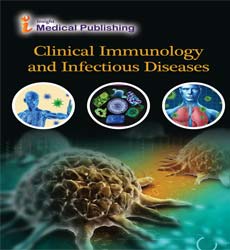| Christopher Ian Wright* Red Pharm, Cold Meece Estate, Cold Meece, Staffordshire, United Kingdom. |
| *Corresponding Author: Christopher Ian Wright, Red Pharm, Cold Meece Estate, Cold Meece, Staffordshire, United Kingdom. Tel: 447967230155; E-mail: RedPharm@outlook.com |
| Received: December 11, 2015; Accepted: March 10, 2016; Published: March 12, 2016 |
Keywords |
| Finiflu; Garlic; Onion; Chilli; Cold; Flu; Symptomatic relief |
Letter to Editor |
| I would like to raise awareness of ‘Does Finiflu (containing garlic, onion and chilli) provide symptomatic relief from cold and flu? What is the evidence base for this remedy?’ published in Advances in Nutrition and Food [1]. This article assesses the evidence base for ‘Finiflu’ a natural remedy for the symptoms of cold and flu and approved in 2009 by the Therapeutic Goods Administration (TGA) in Australia [2]. However, the evidence for Finiflu had never been researched and was the focus of this research. |
| Finiflu received a class 5 approval from the TGA and this relates to ‘Pharmaceutical, medical preparations and substances; vitamins and vitamin supplements; minerals and mineral supplements; nutritional supplements; pharmaceutical preparations containing vitamins, minerals and herbal substances; natural health food and herbal remedy products in this class; compositions and other preparations included in this class for making any of the aforesaid goods.’ Its preparation includes chill, onion, garlic and is chocolate flavoured. The objective of the current research was to determine the extent of evidence base supporting the effectiveness of Finiflu. |
| The first research question set-out to define the characteristic properties of Finiflu and this was done by searching information in the public domain and primarily identified on the TGA and manufacturer’s website. This analysis showed a paucity of data relating to the pharmacodynamics and pharmacokinetic properties of Finiflu. These are significant limitations and from this it is possible to conclude that there is no pharmacodynamics evidence based to support the use of Finiflu for the relied of cold and flu symptoms. There is also no evidence based to characterise if Finiflu, in the doses it contains, is absorbed by the body and no data on how it is distributed, metabolised and excreted. So it is unclear if the dose marketed has any effect in cold and flu and how it should be consumed, assuming it has an effect, to achieve the best results. |
| The second question sought to ask what clinical evidence could be identified on the US National Library of Medicine National Institutes of Health and focused on review articles in humans. |
| Search strings focused on the product (‘Finiflu’) and its main ingredients (‘garlic’, ‘onion’ and ‘chilli’) and were combined with search terms that describe the symptoms of cold and flu (i.e., ‘common cold’, ‘flu’, ‘congestion’, ‘cough’, ‘mucous’ and ‘runny rose’). These searches revealed no clinical evidence supporting the use of Finiflu, which complements the findings in question one. There was also limited clinical evidence for the use of Finiflu’s main ingredients. Interestingly, there was some evidence supporting the prophylactic use of garlic [3,4]. This was based on the results of a Cochrane Review published in 2014 where only one randomised placebo controlled trial met a pre-defined inclusion criteria and showed that the daily ingestion of a garlic supplement (containing 180 mg of allicin) for 12 weeks significantly reduced the occurrence of the common cold (i.e., 24 vs. 65 occurrences; garlic supplement vs. placebo). Garlic also reduced the number of ill days experienced as compared with placebo (111 vs. 366 days, respectively), but had no effect on the number of days taken to recover from a common cold (i.e., 4.63 vs. 5.63 days; garlic supplement vs. placebo) |
| This research concluded that the “…evidence for Finiflu, as well as its individual ingredients, is quite limited. This means that further research is needed to establish the efficacy of Finiflu and to also validate findings previously reported, as is the case for garlic.” |
Acknowledgements |
| The author would like to acknowledge the writing support provided by Red Pharm communications, which is part of the Red Pharm company (please see @RedPharmCo on Twitter). |
References |
|
Select your language of interest to view the total content in your interested language
Open Access Journals
- Aquaculture & Veterinary Science
- Chemistry & Chemical Sciences
- Clinical Sciences
- Engineering
- General Science
- Genetics & Molecular Biology
- Health Care & Nursing
- Immunology & Microbiology
- Materials Science
- Mathematics & Physics
- Medical Sciences
- Neurology & Psychiatry
- Oncology & Cancer Science
- Pharmaceutical Sciences
